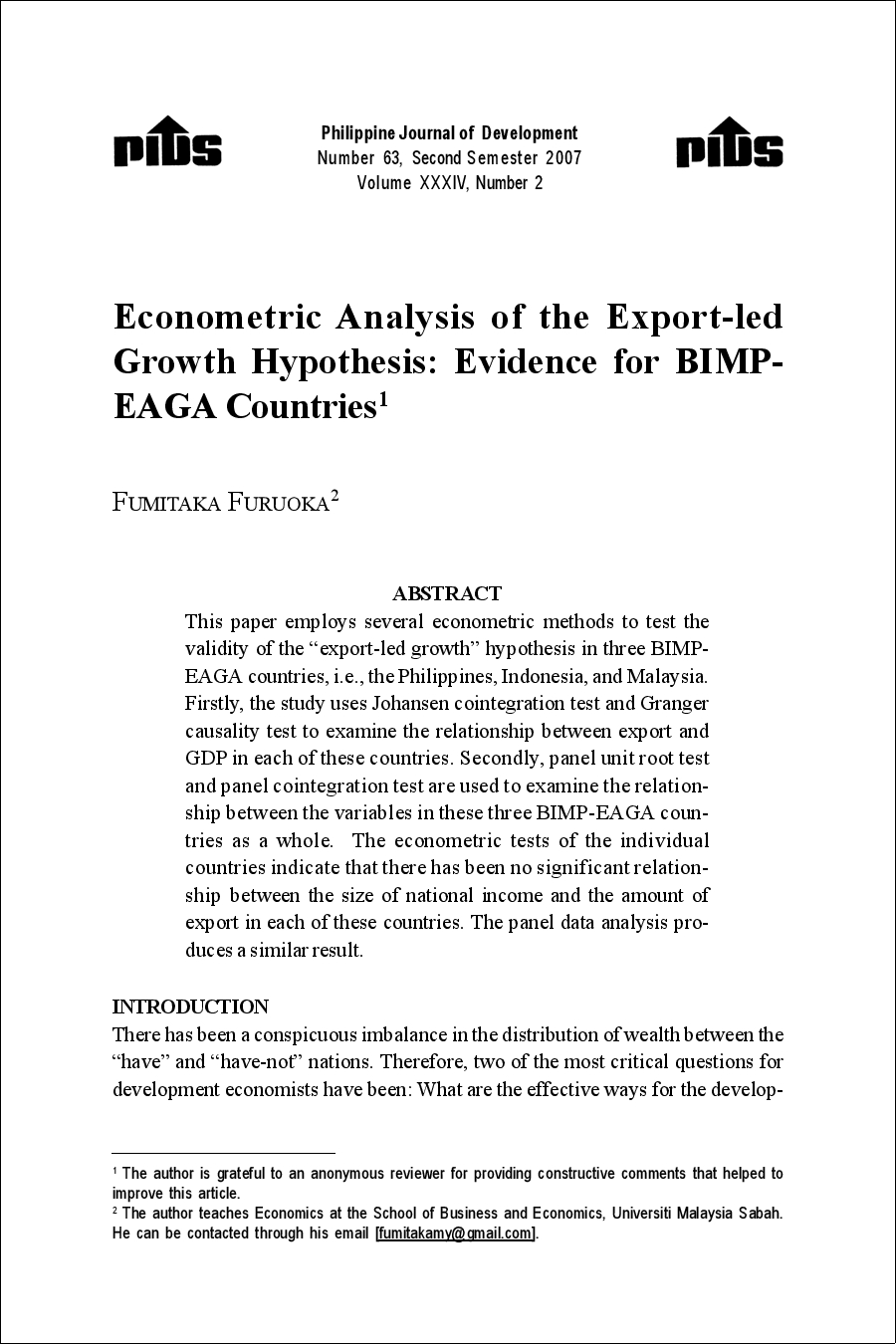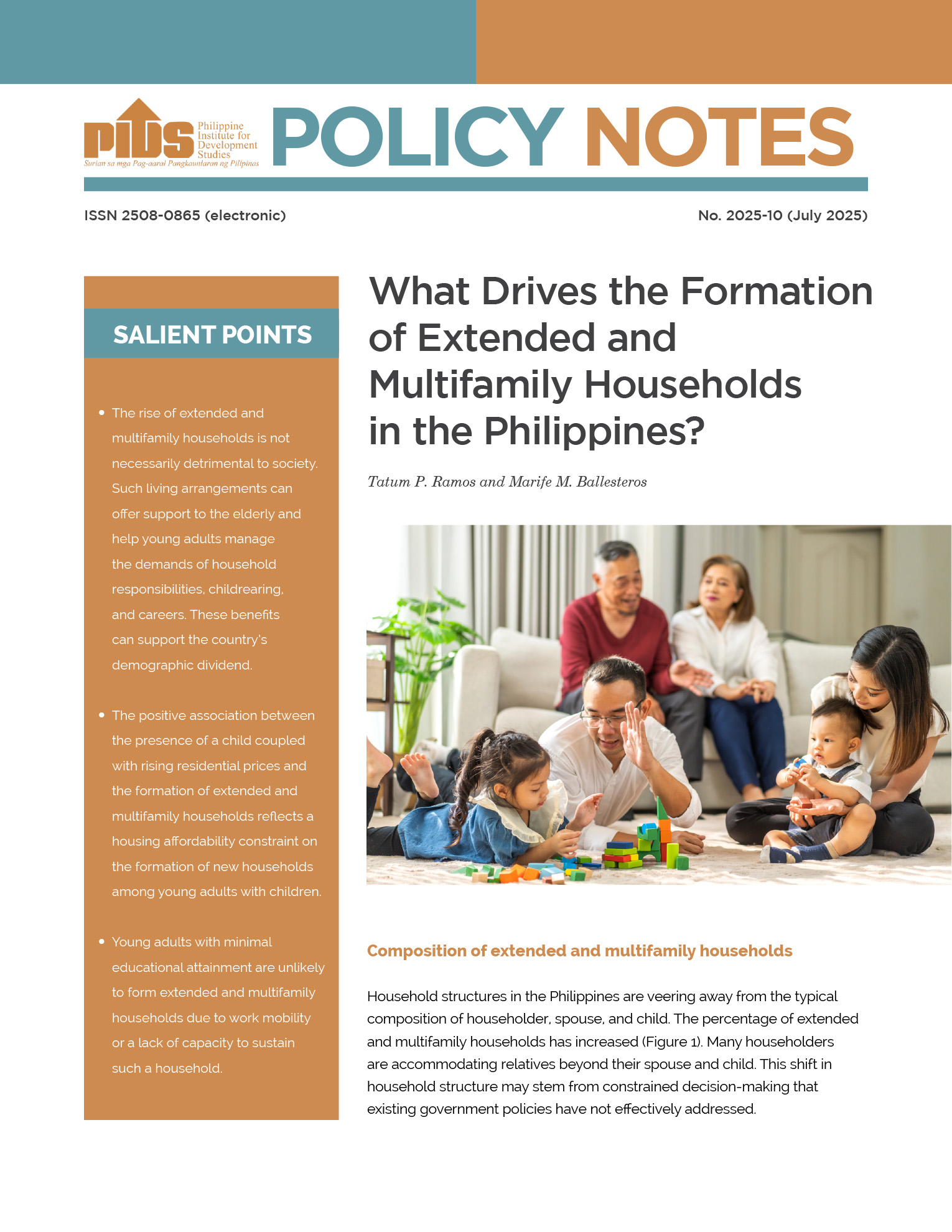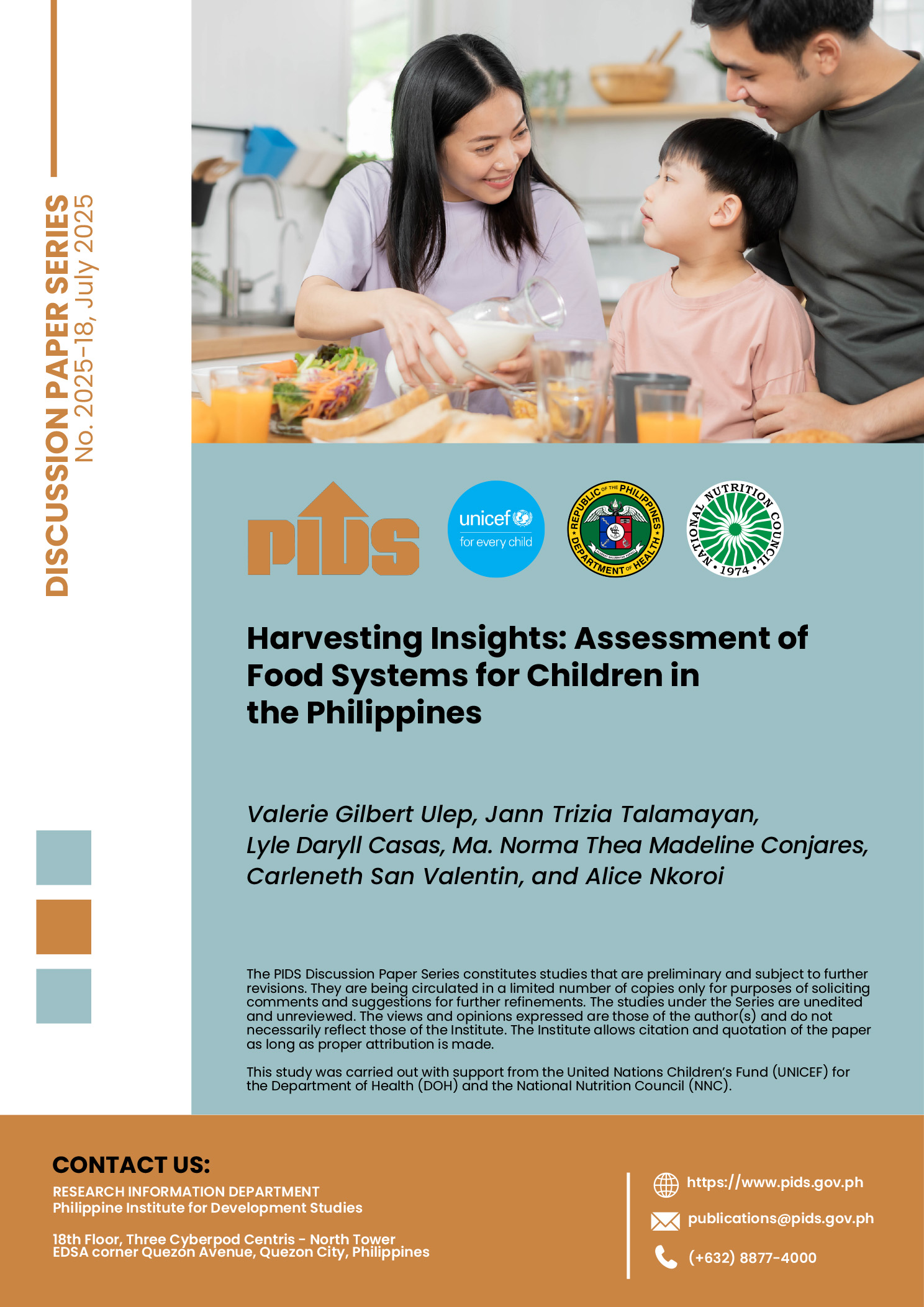This paper employs several econometric methods to test the validity of the "export-led growth" hypothesis in three BIMP-EAGA countries, i.e., the Philippines, Indonesia, and Malaysia. Firstly, the study uses Johansen cointegration test and Granger causality test to examine the relationship between export and gross domestic product (GDP) in each of these countries. Secondly, panel unit root test and panel cointegration test are used to examine the relationship between the variables in these three BIMP-EAGA countries as a whole. The econometric tests of the individual countries indicate that there has been no significant relationship between the size of national income and the amount of export in each of these countries. The panel data analysis produces a similar result.
Citations
This publication has been cited 4 times
- Agustiar, Memet. 2013. Structural transformation in West Kalimantan towards ASEAN economic community 2015. MPRA Paper 66552, Apr 2013. University Library of Munich, Germany.
- Ballester, Richard and Joy Sinay. 2013. An empirical analysis of the export-led growth (ELG) hypothesis in the Philippines. Philippine Review of Economics, 50, no. 1, 83-110. University of the Philippines School of Economics and Philippine Economic Society.
- Setiawan, Sigit. 2017. Middle income trap and infrastructure issues in Indonesia: a strategic perspective. International Journal of Economics and Financial Issues, 7, No. 4, 42-48. Econjournals.
- Zeren, Fatma and Burcu Kilinc Savrul. 2013. Revisited export-led growth hypothesis for selected European countries: A panel hidden cointegration approach. Istanbul University Econometrics and Statistics e-Journal, 18, no. 1, 134-151. Department of Econometrics, Faculty of Economics, Istanbul University.













